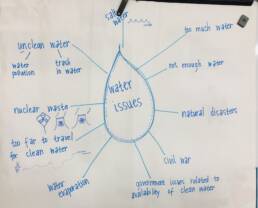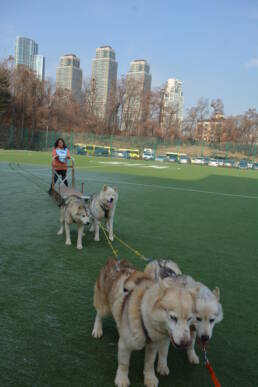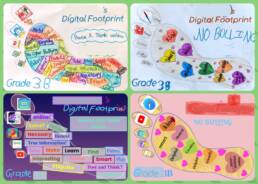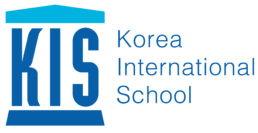Science
KIS scientists are engaged all year observing, questioning, investigating, hypothesizing, experimenting, and analyzing the world around them. Rather than seeing Science as a series of separate disciplines, the KIS Science curriculum provides a framework for viewing Science as “an interrelated world of inquiry and phenomena” (Next Generation Science Standards). The NGSS curricular framework emphasizes:
- systems thinking and modeling to explain phenomena and to give a context for the ideas to be learned
- conducting investigations, solving problems, and engaging in discussions with teacher guidance
- discussing open-ended questions that focus on the strength of the evidence used to generate claims
- reading multiple sources and developing summaries of information
- writing of journals, reports, posters, and media presentations that offer explanations and arguments
Technology
The KIS technology program is embedded within our STEM-based curriculum. Students engage in learning experiences that apply technology as a tool to understand the world and natural phenomena, as well as imagine world that do not yet exist.
The KIS technology program builds upon the ISTE Standards. The ISTE Standards provide framework for the competencies for learning and teaching in the digital age. The program emphasizes the following learning areas:
- empowered learner
- digital citizen
- knowledge constructor
- innovative designer
- computational thinker
- creative communicator
- global collaborator
Design
At KIS Seoul Campus, students enjoy our Design Learning Center, which is filled with recycled and interesting materials, specialized tools. and tech tools for creation and problem-solving. One of the main focal areas of the design learning experiences for students is problem-solving. based on the Design Cycle. Students learn about solution design while identifying problems, proposing solutions, and creating these solutions using tangible and digital tools. Through these experiences, students acquire a taste for answering complex, open-ended problems, and learn more about design elements and engineering in the process. The Design Learning Center is the hub of creation in our school, augmenting our project-based learning approach and ethos which ties together all curricular areas into a holistic learning experience for students.
Science
Science learning offers students exciting ways to satisfy their natural curiosity about the surrounding world, natural phenomena, and the universe. Students explore complex, real-world issues that impact hum an life. For example, an important part of our Grade 5 curriculum looks at water scarcity. Students partner with the Science teacher to build prototype solutions to bring water to areas in need.

Design
Our Design Center is a space where all KIS Seoul Campus children enhance their learning, create prototypes of their ideas using a variety of engineering tools. Our variety of tools include 3D printers, power tools, coding tools, and recycled materials for prototype creation.
The students in upper elementary recently inquired into dogsledding. This project integrated mathematics, design, science and social studies. The students designed their own dog sleds and tested out their prototypes with professional “musher” who raise Siberian Huskies for racing.

Technology
Our technology program continually focuses on digital citizenship. Student learn about their rights and responsibilities online, helping them to act responsibly and ethically in digital spaces One such example is the “digital footprint” project as seen in the image below. It is crucial for students to develop an understanding of how personal information works online, and who has access to it. This helps students to conceptualize the contemporary world and how unseen factors that impacts out everyday lives.

